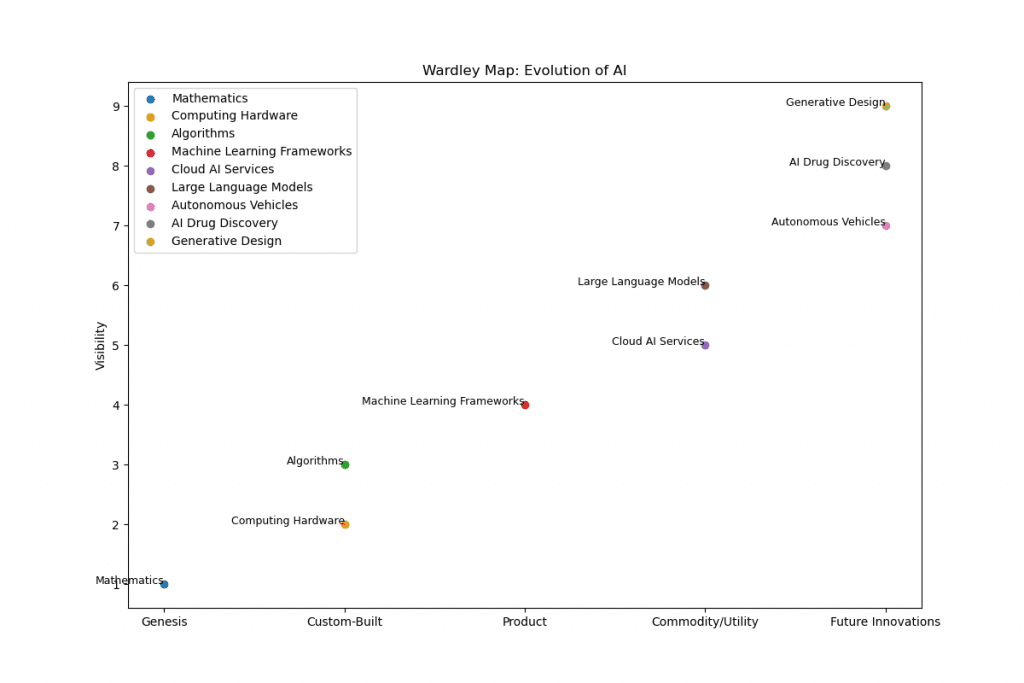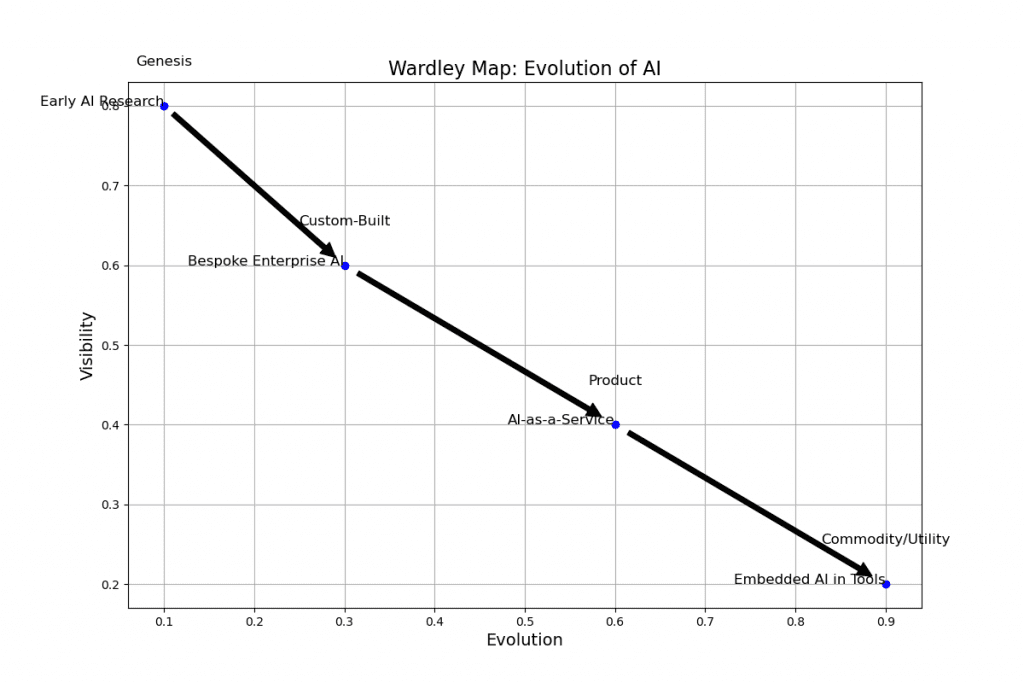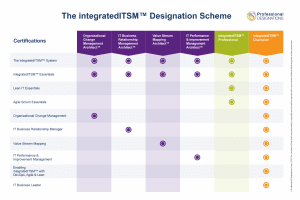Introducing Wadley Maps
In the ever-evolving landscape of technology, few tools help us understand strategic shifts as clearly as Wardley Maps. Developed by Simon Wardley, this framework visualizes how technologies evolve—from novel innovations to invisible utilities—and how that evolution shapes competitive advantage.
One of the most compelling examples of this progression today is Artificial Intelligence (AI). What was once the domain of researchers and science fiction is now embedded in everyday tools and workflows. But how did we get here—and what comes next?
Let’s explore AI’s journey through the lens of Wardley’s four-stage evolution: Genesis → Custom-Built → Product → Commodity/Utility.

1. Genesis: The Birth of AI
The Genesis phase is where ideas are born—unpredictable, experimental, and full of potential. For AI, this began in the mid-20th century with early research into machine learning, neural networks, and symbolic reasoning. These efforts were largely academic, with limited real-world application and high uncertainty.
AI in this stage was exciting but impractical. It was the realm of visionaries, not businesses.
2. Custom-Built: AI for the Few
As computing power grew and data became more accessible, AI entered the Custom-Built phase. Enterprises began developing bespoke AI solutions tailored to specific problems—fraud detection, recommendation engines, natural language processing.
These systems were powerful but expensive. They required teams of data scientists, engineers, and infrastructure. AI was no longer just an idea—it was a tool, but only for those with the resources to build it.
3. Product: AI-as-a-Service
The next leap came with the rise of AI-as-a-Service. Platforms like OpenAI, Google Cloud AI, and AWS SageMaker began offering pre-trained models and APIs that businesses could plug into their workflows.
This marked the Product phase: AI became more accessible, standardized, and scalable. You no longer needed to build from scratch—you could buy, integrate, and deploy. This democratized AI, enabling startups and SMEs to compete with larger players.
4. Commodity/Utility: AI as Infrastructure
Today, AI is rapidly becoming a Commodity—a foundational utility embedded in the tools we use every day. From autocomplete in emails to intelligent document processing and customer service bots, AI is increasingly invisible and expected.
Like electricity or cloud storage, AI is becoming part of the infrastructure. It’s no longer a differentiator in itself—it’s the baseline for what comes next.
5. The Next Layer: What AI Enables
Wardley’s model is recursive. Each utility becomes the foundation for the next wave of innovation.
AI is now enabling new “Genesis” technologies:
- Autonomous systems that learn and adapt in real time.
- AI-generated pharmaceuticals and personalized medicine.
- Hyper-personalized education and adaptive learning platforms.
- Synthetic media and real-time language translation.
These are the next frontiers—built on the utility of AI.
Conclusion: Strategy in the Age of AI
Understanding where AI sits on the Wardley Map helps organizations make smarter strategic decisions. If you’re still treating AI as a differentiator, you’re behind. The real opportunity lies in what you build on top of it.
AI is no longer the innovation—it’s the infrastructure. The question now is: What will you create with it?











